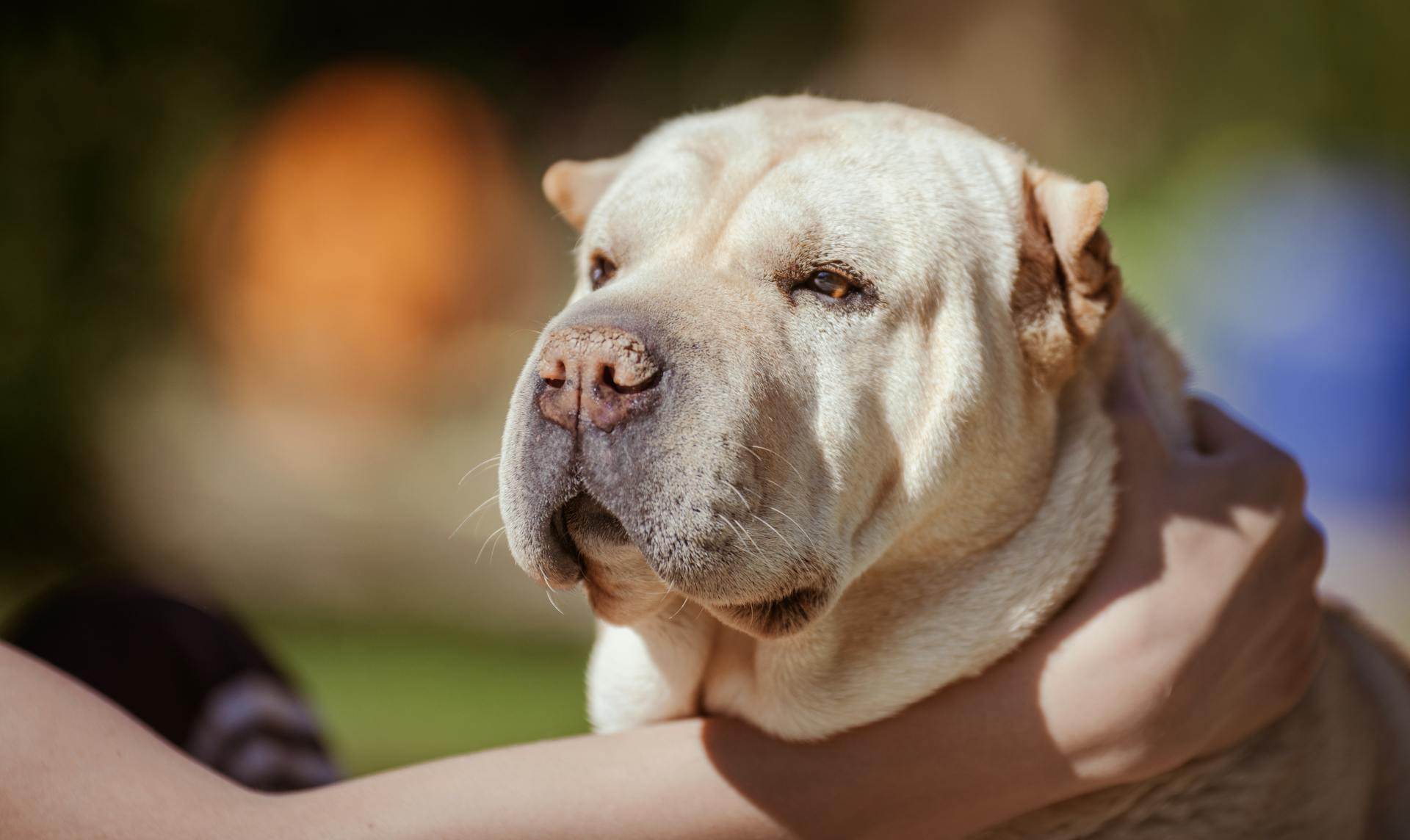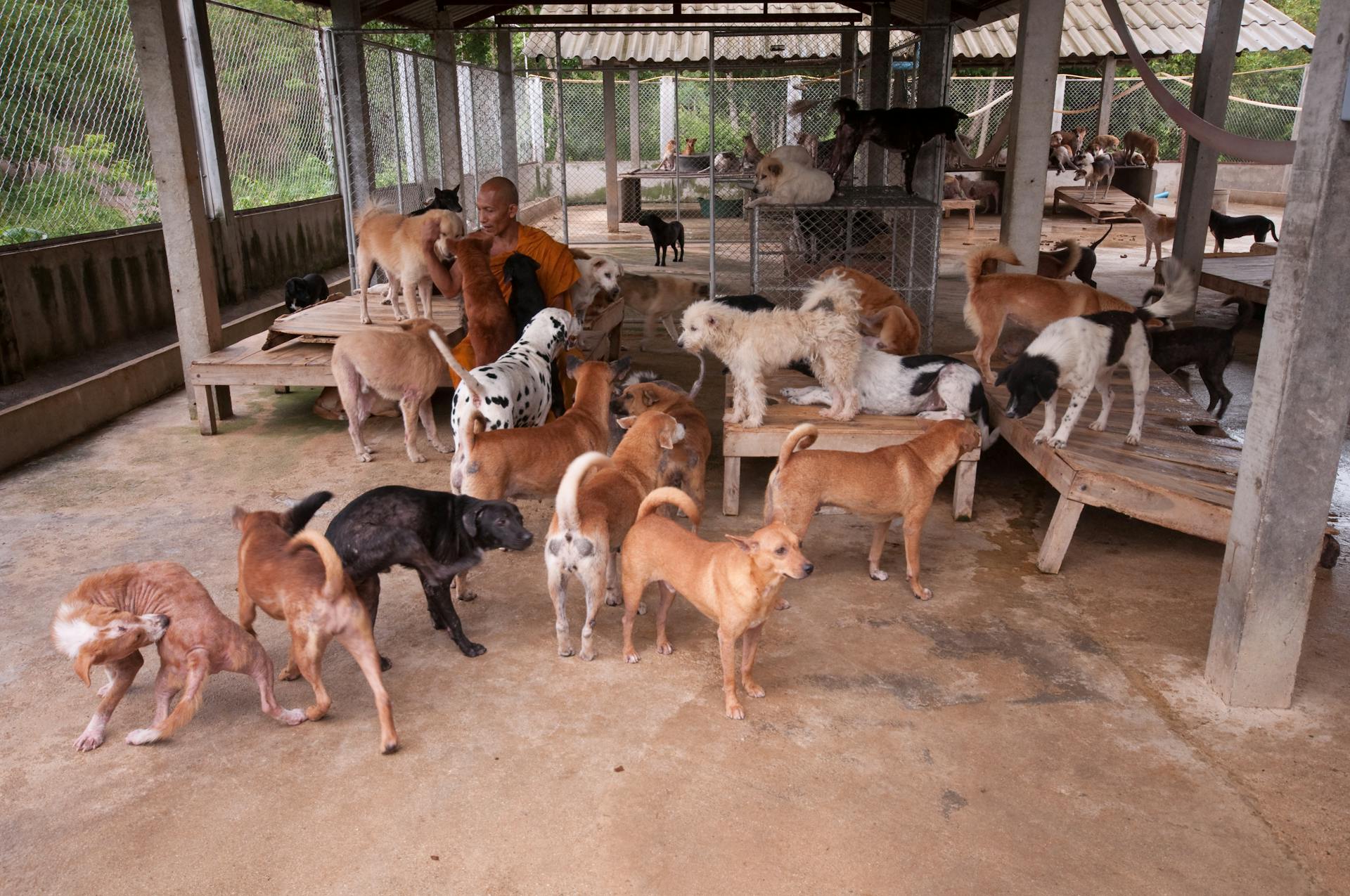
Dogs can suffer from a variety of skin diseases, each with distinct characteristics and symptoms.
One common type of skin disease in dogs is atopic dermatitis, which is often referred to as "allergies" in humans. It can cause intense itching, redness, and skin thickening.
Hot spots, also known as pyotraumatic dermatitis, are painful skin lesions that can appear suddenly, often on the dog's head, neck, or belly. They're usually red, inflamed, and ooze pus.
Follicular dysplasia is another skin disease that affects dogs, causing hair loss, skin thickening, and the formation of comedones, or blackheads.
Readers also liked: Acral Lick Dermatitis Cat
Common Skin Conditions
Dogs can suffer from many different kinds of skin conditions, just like humans can. Some of the most common skin conditions in dogs include skin conditions that can affect both people and dogs.
Itchy, red skin is a common sign of a skin condition in dogs. Dry, flaky patches and bumps or scabs are also often present. Hair loss and excessive licking or scratching are other symptoms to look out for.
You might like: Common Dog Diseases and Symptoms
Some of the most common skin conditions in dogs include:
- Fleas and flea allergies
- Food allergies
- Atopic dermatitis
- Seborrhea
- Acne
These conditions can cause a wide range of symptoms, including frequent scratching, biting at their skin, and irritation such as redness. If you notice your dog displaying any of these signs, it's best to contact your vet to start the process of diagnosis and treatment.
Allergies and Infections
Allergies and Infections are common causes of skin problems in dogs. Allergies can be triggered by environmental allergens like dust, pollen, and grasses, or by food ingredients like beef, wheat, or fish.
The most common sign of an airborne allergy is frequent scratching due to itchiness, which can lead to skin problems like wounds and scabbing. Food allergies can cause similar signs, including inflammation inside the nose and ear infections.
Bacterial infections can also occur, often as a secondary symptom of other causes, such as skin allergies. The most common type of bacterial infection is bacterial folliculitis, which causes red swellings, itchiness, and pustules.
On a similar theme: Dogs and Food Allergies
To prevent allergies and infections, it's essential to identify and avoid the allergens that are causing the reaction. This can be achieved by conducting an elimination diet, where specific ingredients are removed from the dog's meals for several weeks until symptoms subside.
Here are some common allergens that can trigger skin problems in dogs:
- Dust mites
- Grasses
- Beef
- Wheat
- Fish
- Flea saliva
Yeast Infections
Yeast infections are a type of fungal infection caused by an overgrowth of yeast in the body.
They can be triggered by a weakened immune system, which can be due to antibiotics or other medications that disrupt the balance of gut bacteria.
Women are more likely to experience yeast infections, particularly during pregnancy or menstruation.
Yeast infections can cause symptoms such as itching, burning, and redness in the vaginal area.
Antifungal medications are often prescribed to treat yeast infections, but natural remedies like probiotics and tea tree oil can also be effective.
In some cases, yeast infections can be a sign of an underlying condition such as diabetes or a weakened immune system.
Regularly practicing good hygiene, such as changing underwear daily and avoiding tight-fitting clothing, can help prevent yeast infections.
If this caught your attention, see: Types of Dog Ear Infections with Pictures
Allergies
Allergies are the most common cause of skin conditions in dogs, and they can be triggered by a variety of allergens, including dust, pollen, and certain ingredients in food.
Dogs can have allergic reactions to things in their environment or in their food, and these reactions can cause red, itchy skin and inflammation.
Some common environmental allergens include dust mites and grasses, while food allergies usually stem from proteins found in foods like beef, wheat, or fish.
Fleas can also cause an allergic reaction in some dogs, and their saliva is a common allergen.
Allergies may also lead to secondary skin infections caused by bacteria or yeast.
To prevent allergies in dogs, it's essential to identify and avoid the allergens that are causing the reaction.
Here are some common signs of allergies in dogs:
- Frequent scratching due to itchiness
- Red, itchy skin and inflammation
- Inflammation inside the nose
- Ear infections
- Wounds and scabbing
- Yeast infections
Your vet will likely conduct a physical exam and ask questions about your dog's lifestyle and diet to help narrow down the possible allergens.
Allergy tests may also be conducted to measure how your pup reacts to certain substances.
If there's reason to believe the allergy comes from your dog's diet, your vet may suggest an elimination diet, a process where specific ingredients are removed from their meals for several weeks until symptoms subside.
You might enjoy: Diabetes Diet for Dogs
Bacterial Infections
Bacterial infections in dogs can be a secondary symptom of other causes, such as skin allergies. An itchy dog with skin allergies could give themselves wounds which can become infected.
Bacterial folliculitis is the most common type of bacterial infection in dogs, and it's an infection and inflammation of the hair follicles. Red swellings, itchiness, and pustules are signs of folliculitis.
Dogs with bacterial infections may exhibit a range of symptoms, including red swellings and pustules, which can be painful and itchy.
Lupus
Lupus is an autoimmune disorder that can affect the skin, joints, and other organs in dogs. It's caused when the body's immune system attacks or begins to attack its own cells and body tissues.
The most common signs of lupus in dogs are lesions on the skin or eyes, as well as alopecia (hair loss) or scaling of the skin. In some cases, you may also notice that your pup is feeling lethargic, has a decreased appetite or has joint pain.
Lupus can range from mild to severe, and managing it typically involves the use of immunosuppressive drugs, such as corticosteroids. Vitamin E supplements are also often prescribed to help reduce inflammation and prevent further damage to the skin.
In more severe cases, additional medications such as antibiotics or antifungal medication may be prescribed to help manage the condition. It's essential to work closely with your vet to determine the best course of action for your dog.
Providing a nutritious diet is also essential to maintain your dog's overall health, especially when managing lupus.
Additional reading: What Is Canine Lupus
Other Skin Issues
Some dog skin issues can be caused by allergies, with symptoms like redness, itching, and hot spots.
Contact dermatitis, for example, is a type of skin allergy that can cause skin irritation and redness.
Other skin issues can be caused by infections, such as bacterial or fungal infections, which can lead to skin lesions and scabbing.
Dry Skin
Dry skin can be a real nuisance for dogs, especially during the colder months. It's a common skin issue that may be caused by a lack of essential fatty acids or environmental factors.
Dry skin usually presents itself as patches of red or flaky skin. Excessive shedding is another common symptom, especially during the summer.
If left untreated, your dog might experience permanent hair loss due to excessive scratching and licking. This is because dry skin can be itchy and uncomfortable for your dog, leading to compulsive scratching and licking behaviors.
Your vet will be able to help you determine the underlying cause of your dog's dry skin and recommend treatment. They may also be able to provide you with advice on how to prevent dry skin in the future.
Additional reading: Allergies for Dogs Scratching
Mange
Mange is a skin condition caused by mites that burrow into the skin, often leading to severe itching and inflammation. There are two types of mange: sarcoptic mange, which affects the whole body, and demodectic mange, which is localized to certain parts of the body.
For more insights, see: How Do Dogs Catch the Mange
Sarcoptic mange is highly contagious and can easily spread between animals, including dogs and wild animals like foxes and coyotes. Dogs can contract sarcoptic mange from other dogs or even wild animals.
Demodectic mange, on the other hand, is not contagious and usually only affects young dogs with weakened immune systems or older dogs who have an underlying medical condition. It's caused by the Demodex mite, which lives in hair follicles and can cause hair loss and skin irritation.
Dogs with sarcoptic mange will often have skin lesions or hair loss, and may exhibit intense itching, which can lead to red, scaly skin. Severe cases may also cause visible mites on the skin.
Here are the key differences between demodectic mange and sarcoptic mange:
If you suspect your dog has mange, it's essential to bring them to the vet for a diagnosis and treatment. Your veterinarian will likely perform a physical examination, test some samples of the skin lesions under a microscope, and possibly perform an intradermal test to confirm the diagnosis.
A fresh viewpoint: Canine Distemper Test
Hot Spots
Hot Spots are a common skin issue that can cause significant discomfort for dogs. They appear as red, raised patches on the skin, often accompanied by hair loss.
Hot spots can be itchy and uncomfortable, and if left untreated, they can become infected and cause further pain for your pet.
Red, wet patches on your dog's skin are a clear indication of a hot spot. You may also notice your dog licking, scratching, or biting at the affected area.
Excessive grooming can cause trauma to healthy skin, leading to hot spots. Bacteria can then enter the skin, causing an infection.
If your dog is diagnosed with hot spots, it's essential to get them treated right away. Treatment options include antibiotics, anti-inflammatory medications, specific shampoos, and topical ointments.
Here are some helpful treatment options for hot spots:
- Antibiotics to clear up any infections
- Anti-inflammatory medications to reduce swelling
- Specific shampoos to cleanse the wound
- Topical ointments for soothing relief
Addressing the underlying cause of hot spots, whether it's an infection or allergy, is crucial to preventing future occurrences. This may involve making dietary changes or consulting a specialist for further investigation.
Ringworm
Ringworm is a common skin issue that can affect dogs. It's caused by a fungal infection that can spread through contact with an infected pet or contaminated items.
Your vet can diagnose ringworm by performing a physical exam and taking samples from the affected skin area. They may use a special light, like a Wood's lamp, to make the infection more visible.
A culture sample or scraping of infected material can also be checked under a microscope to confirm the diagnosis. Your vet may recommend antifungal shampoos, creams, or oral medications to treat the infection.
In some cases, your vet may suggest changes to your pet's diet to boost their immune system and overall health. This can be especially helpful in preventing future infections.
A unique perspective: English Bulldog Wrinkle Infection
Diagnosis and Treatment
Diagnosing dog skin diseases can be a challenge, but it's crucial to identify the issue early on to prevent further complications. Your vet may perform a physical exam, take skin samples for testing, and use a Wood's lamp to diagnose conditions like ringworm.
A diagnosis of sarcoptic mange can be made by observing skin lesions, hair loss, and intense itching. Visible mites on the skin can also be a giveaway. If you suspect your dog has been in contact with another dog with sarcoptic mange, take them to the vet immediately.
Treatment for dog skin diseases usually involves medication, with immunosuppressive drugs like corticosteroids often prescribed to reduce inflammation. In some cases, antifungal shampoos, creams, or oral medications may be recommended, as seen in ringworm infections.
Diagnosing a Condition
Diagnosing a condition in your dog can be a bit tricky, but it's essential to get an accurate diagnosis to provide the right treatment. Your vet will typically examine your dog and carry out any necessary tests to determine the cause of the skin condition.
Your vet may also ask questions about your dog's lifestyle and diet to help narrow down the possible allergens. They may conduct allergy tests to measure how your pup reacts to certain substances.
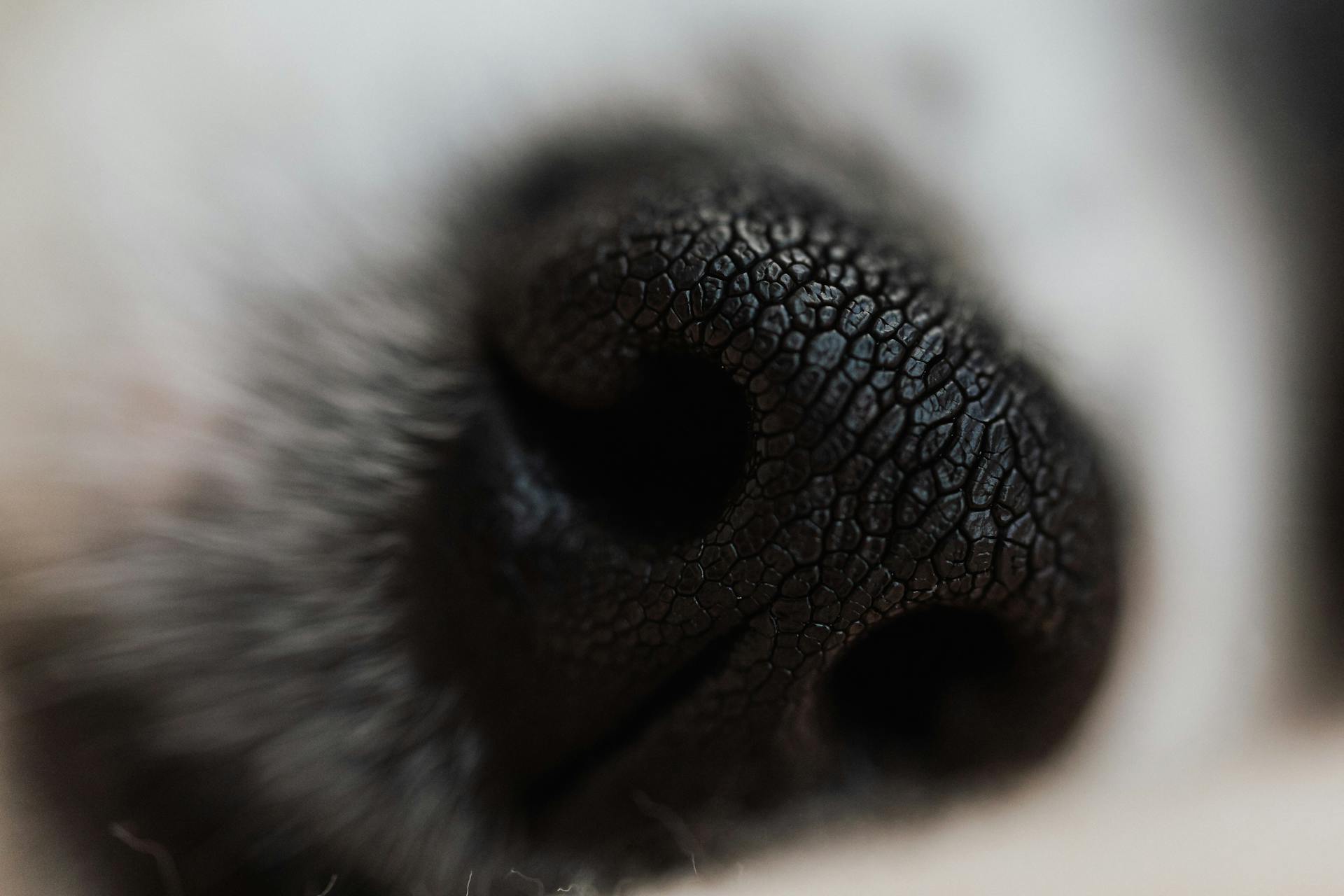
A physical exam and testing of skin samples under a microscope are common initial steps in diagnosing mange. If sarcoptic mange is suspected, your vet may perform an intradermal test to confirm the diagnosis.
Your vet can diagnose ringworms in your dog by performing a physical exam of the affected area and taking samples from the skin for further testing. They may use a Wood's lamp, which is a special light designed to make fungal infections easier to see.
It's essential to keep in mind that it may take several weeks before you see results from these treatments. In the meantime, be sure to keep your dog away from other animals until their condition improves.
Here are some common signs of skin conditions in dogs:
- itchy, red skin;
- dry, flaky patches;
- bumps or scabs;
- hair loss;
- excessive licking or scratching; and
- a foul odor.
If you notice any of these signs, it's best to contact your vet to start the process of diagnosis and treatment.
Treating a Condition
If you suspect your dog has a skin condition, it's essential to get them to the vet as soon as possible for an examination.
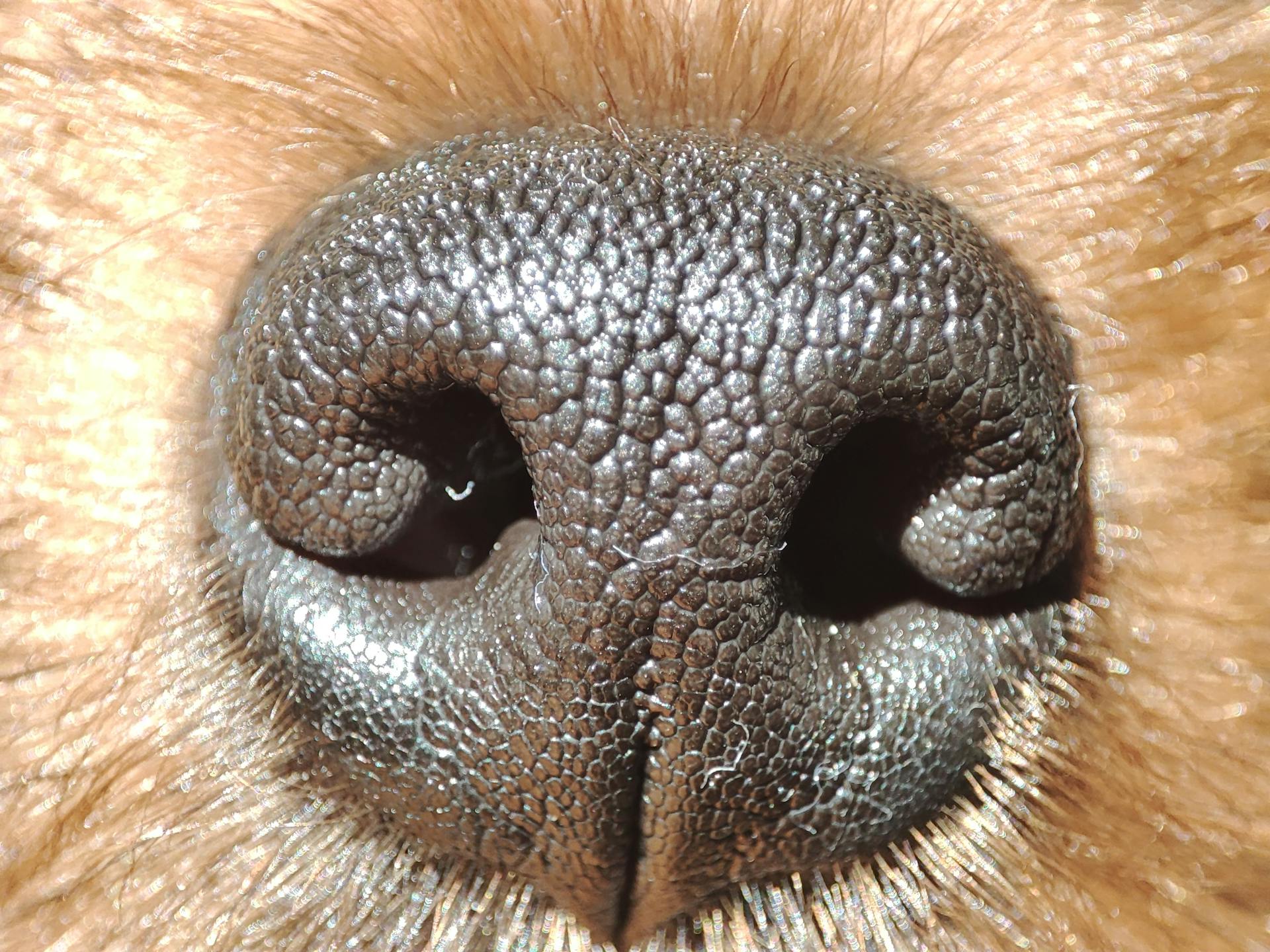
Early detection and prompt medical attention can help prevent long-term damage to your pup's overall health.
Dogs with sarcoptic mange may exhibit intense itching, which can lead to red, scaly skin, and visible mites on the skin.
Managing bullous pemphigoid usually involves immunosuppressive drugs, topical ointments, and shampoos to reduce inflammation.
In more severe cases of bullous pemphigoid, surgery may be required to remove damaged tissue or organs.
To effectively manage pemphigus, your vet may prescribe immune-suppressing medications, such as corticosteroids, to reduce inflammation and decrease symptoms.
Providing a nutritious diet and keeping your dog's skin clean by bathing them regularly with a mild shampoo is crucial for overall health.
Medicated shampoos or topical creams can help reduce oil production in dogs with seborrhea.
In more severe cases of seborrhea, oral medications or dietary changes may be necessary to get your pet's symptoms under control.
Keeping the affected area clean and dry can help prevent secondary bacterial infections from developing.
Additional reading: Dog Skin Health
Prevention and Consequences
If left untreated, skin conditions can become severely infected or cause more serious illnesses in dogs. This can lead to further irritation and inflammation, hair loss, infections, and even permanent scarring.
Dogs may experience pain and discomfort, which can affect their quality of life. Unbalanced hormones, allergies, vitamin deficiency, lupus, and skin lymphoma are all potential underlying causes of skin conditions.
Here are some potential consequences of untreated skin conditions in dogs:
- Unbalanced hormones
- Having allergies
- Vitamin deficiency
- Lupus and other immune-mediated diseases
- Skin lymphoma
Preventing Skin Conditions
Regular grooming is key to keeping your pet's skin and coat clean and healthy, which can help remove dead hair or dandruff that may be harboring yeast spores.
This is especially important for dogs prone to allergies or hormonal imbalances, as these factors can lead to an overgrowth of yeast on the skin.
Providing fresh water at all times can also help flush out toxins that may cause infection.
Essential fatty acids like fish oil can help maintain your dog's skin health, making it easier to prevent skin conditions.
Explore further: Skin Care for Dogs with Allergies
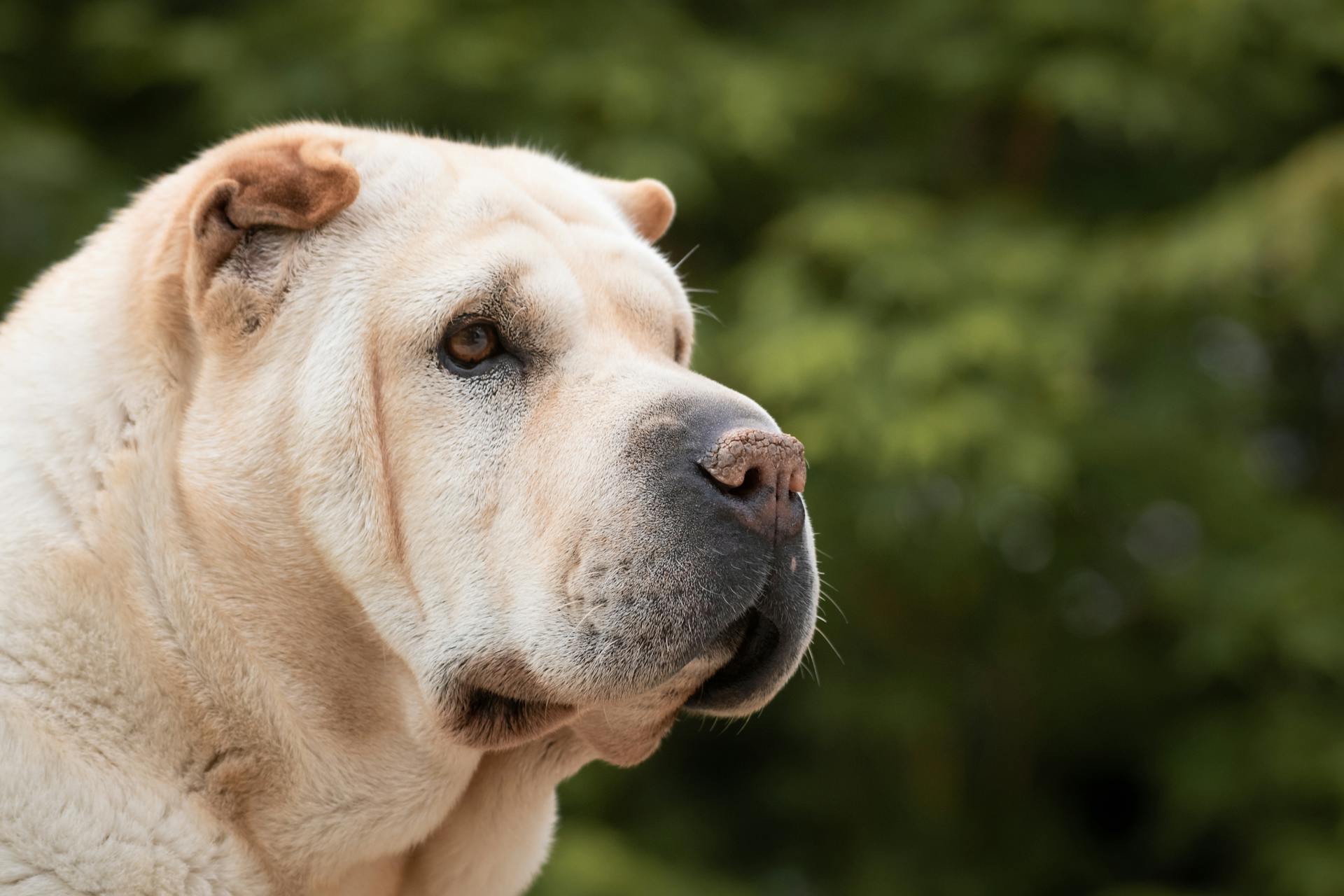
Here are some specific actions you can take to prevent skin conditions:
- Keep your pet's skin and coat clean and healthy through regular grooming.
- Watch out for signs of allergies or hormonal imbalances.
- Ensure your pet has access to fresh water at all times.
- Provide your dog with essential fatty acids like fish oil.
- Keep your pet's environment clean and free of allergens or irritants.
Consequences of Untreated Conditions
If a skin condition is left untreated, it can lead to some serious consequences for your furry friend. Dogs may experience further irritation and inflammation, which can cause hair loss, infections, and even permanent scarring.
These complications can make your dog's life quite uncomfortable. They may experience pain, which can affect their quality of life.
Some underlying conditions that can contribute to skin problems include unbalanced hormones, allergies, vitamin deficiency, and immune-mediated diseases like lupus. Skin lymphoma is also a possibility.
Here are some potential complications that can arise from untreated skin conditions:
- Unbalanced hormones
- Having allergies
- Vitamin deficiency
- Lupus and other immune-mediated diseases
- Skin lymphoma
Veterinary Care
Getting the right veterinary care is crucial in treating dog skin diseases. Regular check-ups can help identify skin problems early on.
A veterinarian can diagnose skin conditions by examining your dog's skin, taking a complete medical history, and performing diagnostic tests if needed. They can also recommend the best course of treatment.
Some common treatments for dog skin diseases include medicated shampoos, topical creams, and oral medications. These treatments can help alleviate symptoms and prevent further skin problems.
A well-balanced diet can also play a role in maintaining healthy skin in dogs. Some dog foods are specifically formulated to support skin health.
Regular grooming is essential in preventing skin problems in dogs. Brushing your dog regularly can help remove loose hair and distribute skin oils.
Sources
- https://www.merckvetmanual.com/dog-owners/skin-disorders-of-dogs/whole-body-disorders-that-affect-the-skin-in-dogs
- https://www.thesprucepets.com/photos-of-two-canine-dermatology-patients-4121974
- https://www.vets-now.com/pet-care-advice/dog-skin-conditions/
- https://www.dvm360.com/view/fatal-skin-diseases-dogs-and-cats-what-veterinary-professionals-need-know
- https://www.pethonesty.com/blogs/blog/10-common-dog-skin-conditions
Featured Images: pexels.com
